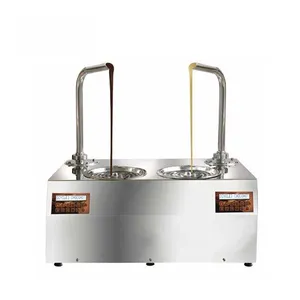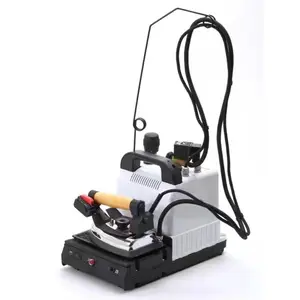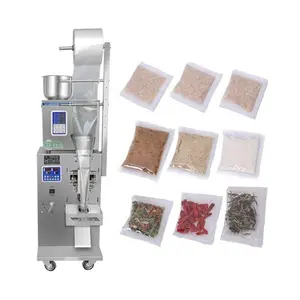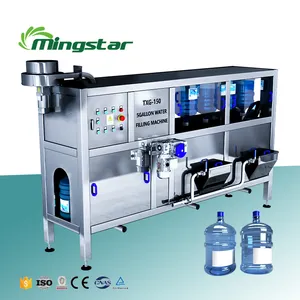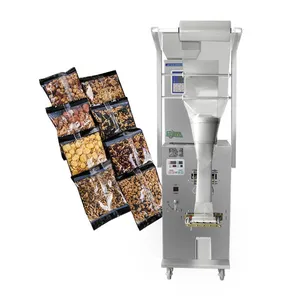Popular in your industry





































































Top categories
About screen printers
What are Screen Printers
Screen printers, widely known in the printing industry as silk screen printing equipment, are versatile machines designed for transferring ink onto various substrates using a mesh screen. This traditional form of printing is popular among a range of businesses, from advertising companies to garment shops, and is utilized to create detailed graphics on a multitude of materials including textiles, metals, wood, glass, and paper.
The process of screen printing involves creating a stencil (also known as a screen), which is a woven mesh that supports an ink-blocking stencil. The open areas of the mesh allow the ink to be transferred onto the substrate, while the blocked-out areas prevent ink from passing through. A squeegee is then used to press ink through the mesh screen onto the surface beneath it, creating the print. This method allows for high levels of vibrancy, especially when printing on dark backgrounds due to the thickness and composition of the ink.
Screen printers can range from simple hand-operated equipment to sophisticated, fully automatic machines. They cater to different scales of production and accuracy needs, making them suitable for small custom boutique operations as well as large-scale industrial applications. The principles behind screen printing have remained largely unchanged over time; however, advancements in technology have led to improvements in precision, speed, and ease of use.
Types of Screen Printers
Screen printers come in a variety of configurations to suit different industry requirements and production volumes:
Manual Screen Printers: These are operated by hand and are ideal for small runs or custom projects. Manual printers are common in boutique settings or for individual artisans who value hands-on control over their prints.
Semi-Automatic Screen Printers: These machines automate part of the printing process while still requiring some manual intervention. They strike a balance between production efficiency and user control and are suitable for medium-sized operations.
Fully Automatic Screen Printers: Suited for high-volume production environments such as manufacturing plants, these printers maximize efficiency with minimal human input. They are equipped with advanced features to ensure consistent quality across large runs.
Flatbed Screen Printers: Designed for flat surfaces, these printers are commonly used for posters, stickers, and electronics. They offer precise alignment and are capable of handling various sizes of prints.
Rotary Screen Printers: Rotary printers are used primarily in the textile industry for fabric printing due to their ability to print continuously on rolls of fabric. They offer high speed and productivity for large-scale fabric decoration.
How to choose Screen Printers
Selecting the right screen printer for your business involves several considerations that can influence productivity and profitability. Here's what businesses should contemplate:
Production Volume: Assess your expected production volume. For small-scale or custom work, a manual or semi-automatic printer may suffice. For larger orders or continuous operation, fully automatic models are more suitable.
Substrate Type: Consider the materials you'll print on. Different screen printers handle various substrates such as textiles, paper, or rigid materials like metal and glass. Ensure the printer you choose is compatible with your product range.
Print Size and Complexity: The size of your prints and the complexity of your designs will determine the type of machine you need. Flatbed printers excel in detailed work on flat surfaces while rotary machines are better for large-scale fabric production.
Space Considerations: Evaluate the space available in your facility. Larger automatic machines require more floor space compared to manual or semi-automatic options.
Budget Constraints: Your budget will also play a significant role in your choice. Balance between initial investment costs against long-term benefits like speed, automation, and print quality.
After-sales Service: Ensure that after-sales support is available for maintenance and repairs. Reliable technical support can greatly affect machine uptime and longevity.
Best Screen Printers on Alibaba.com
For businesses seeking quality screen printers that align with their specific needs—be it for manufacturing plant operations or smaller boutique shops—Alibaba.com stands out as a global wholesale marketplace facilitating access to a comprehensive range of machinery from suppliers around the world. With an extensive selection spanning manual to fully automatic models suitable for various applications like cloth or label printing, buyers can find equipment tailored to their production requirements.
Alibaba.com's platform simplifies international trade by offering features such as Trade Assurance—ensuring payment security until delivery completion—and support services including online technical assistance and field maintenance options. This commitment to customer satisfaction underscores why many businesses turn to Alibaba.com as their go-to source for industrial machinery procurement.
The expansive network on Alibaba.com not only presents opportunities for businesses to source standard equipment but also offers customization options to meet unique requirements. Buyers can engage with suppliers directly through the platform's communication tools, allowing them to negotiate specifications that align with their operational demands while enjoying Alibaba.com's suite of online trade solutions designed to aid businesses at any stage of growth.
Common FAQs for Screen Printers
What is screen printing and how does it work?
Screen printing is a technique that involves transferring ink onto a substrate using a mesh stencil. Ink is pressed through the open areas of the stencil with a squeegee, transferring an image onto the material beneath the mesh.
What types of materials can I print on with a screen printer?
Screen printers can be used on a variety of materials, including textiles, paper, plastic, metal, wood, glass, and ceramics. The versatility of screen printing makes it suitable for many industries.
What are the core components of a screen printer?
Key components of a screen printer include the frame and mesh screen, squeegee, inking system, substrate placement area, and sometimes a conveyor system for automatic printers. Advanced models may also have a PLC (Programmable Logic Controller) for automation.
Can screen printers print multiple colors?
Yes, screen printers can print in multiple colors. Each color requires a separate screen, and the substrate is passed through each screen to add layers of ink in different colors.
How do I choose the right type of screen printer for my business?
When choosing a screen printer, consider your production volume, the types of materials you plan to print on, the size and complexity of your designs, space limitations in your facility, budget constraints, and the availability of after-sales support.
What are the differences between manual, semi-automatic, and fully automatic screen printers?
Manual screen printers require operators to manually control most aspects of the printing process. Semi-automatic printers automate some functions but still need manual input. Fully automatic printers are designed to operate with minimal human intervention for high-volume production.
What should I consider when it comes to after-sales service for screen printers?
Look for suppliers that offer comprehensive after-sales services such as online support, video technical support, field maintenance and repair services, spare parts provision, and potential overseas service centers.
How does the automatic grade of a screen printer affect my choice?
The automatic grade (manual operate, semi-automatic, full-automatic) affects productivity and operator workload. Choose based on your production needs—with higher automation leading to increased production speed but potentially higher costs.
What does the term 'multi-color' in key selling points refer to?
'Multi-color' indicates that the screen printer is capable of handling multiple ink colors during the printing process. This allows for complex designs with more than one color to be printed efficiently.
What are 'core components' in the context of screen printers?
Core components refer to essential parts of a screen printer that significantly influence its function and performance. These typically include motors, PLCs, bearings, gears, pumps, and other mechanical or electronic elements crucial to operation.
How important is voltage consideration when purchasing a screen printer?
Voltage is crucial as it must be compatible with your local power supply. Screen printers often come in standard voltages like 220V or 380V; ensure you choose one that matches your facility's electrical specifications.
Why might I need different ink types for my screen printer?
Different ink types are used based on substrate compatibility and desired finish. Options include solvent ink for durability, UV ink for fast curing and brightness, eco-solvent ink for eco-friendliness, and others tailored for specific applications or effects.
What does 'plate type' mean in relation to screen printers?
'Plate type' refers to the kind of printing system used within the machine. Common plate types include flatbed printers for flat surfaces and cylindrical printers for round objects.
Is local service location an important factor when selecting a screen printer?
Yes, having a local service location can be beneficial as it may offer quicker access to technical support and maintenance services which can minimize downtime if issues arise with your machine.

